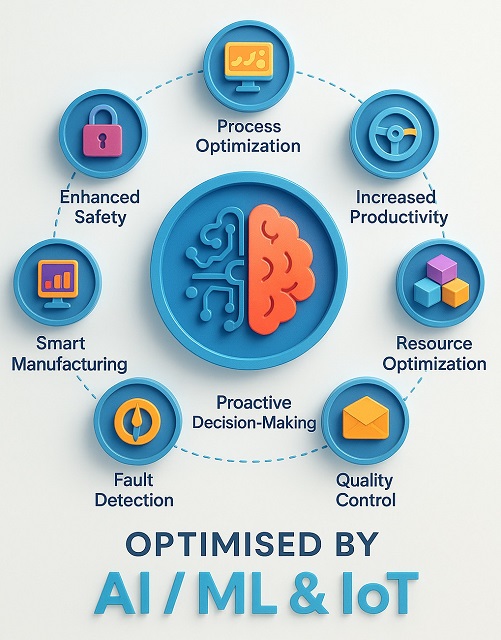GAS COMBUSTION
Kerone Engineering Solutions Ltd. is a leading company in the provision of advanced industrial heating, drying, and process solutions of engineering globally. Having more than 50 years of expertise, we are experts in designing, producing, and delivering custom-made, state-of-the-art systems to meet the ever-changing requirements of the industries across the globe.
We have been involved in engineering excellence, sustainability, digitalization, and technological innovation to become a reliable collaborator whose business partners are in various industries. Kerone will implement Artificial Intelligence (AI), Machine Learning (ML), and Internet of Things (IoT) technologies in our systems to ensure smarter automation, real-time monitoring, predictive maintenance, and process optimization that is data-driven, thus enabling our clients to be more productive, efficient, and reliable.
The Kerone systems are designed to meet Industry 4.0, which leverages AI-powered analytics and IoT connections to provide clients with data insights and intelligent automation to manufacture next-generation products.

A safe system design is known by its composition of gas. Any design is always set for a particular type of gas and variation in which will lead to safety hazard. A system designed for Propane or natural gas cannot have Butane due to its lower self ignition temperature (450 0C), will cause flashback and explosion, as the temperature of Propane is 550 0C and natural gas is 750 0C.
Chemistry of CombustionGenerally, CO2 and H2O are formed as by products of combustion of hydrocarbons. For example,
Construction of MFB BurnerA thin perforated sheet supports the burner as the cloth does not have strength of its own. There is equal distribution of premix as it is fully welded with diverters inside and the housing is made up of SS304. The housing comes with or without collar. The gas can be made to enter from the back or its side. The height will increase in case of side entry of the gas. MFB Cloth 100 is used for blue applications for its low density - 1.5 KG/m2.
* This is formaldehyde. If the mixture hits cold wall, the process stops here. This is why formaldehyde smell is observed in poor heat exchanger designs.
- CH4 + 1/2O2 = CH3OH
- CH3OH + 1/2O2 = HCHO*+H2O
- HCHO = CO+H2
- H2+1/2O2=H2O
- CO+1/2O2=CO2
Gas / air ratios.
- ? = stoichiometric ratio = 1 if air is just adequate for combustion
- ? > 1 if air is excess
- ? <1 if gas is excess
With premix flow leading to heat intensity in the range of 100- 500KW/m2, most of the combustion takes place within the surface of the burner itself. This makes the surface heat, glow and transfer the heat in radiant form. This is infrared mode. Here the surface temperature is highest at 1050 �C. If premix quantity is increased, the burner actually cools down because of excess nitrogen flow. Combustion takes place outside the burner. This is blue flame mode. Here the heat transfer is in convection mode. Intensities as high as 20 MW/m2 are possible. In both the cases flue gases are released in the air. For radiant operation, ? = 1.05 to 1.1 For blue flame mode, ? = 1.1 to 1.2
Efficiencies in Radiant modeAt lower intensities higher amount of combustion takes place within the surface. At around 125KW/m2 the radiant efficiency is highest at approx. 55-60%. Below 100KW/m2 the flame cannot be sustained. Efficiency is high in face down position. It can be increased in any position by adding a grid in front.
